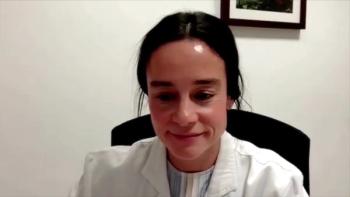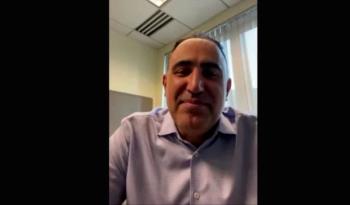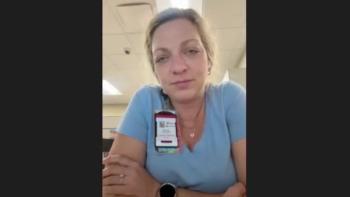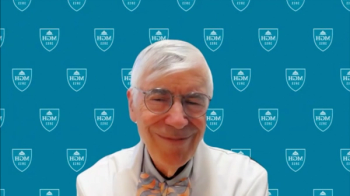
Study Summary: Once-Weekly Versus Twice-Weekly Carfilzomib in Patients With Relapsed and Refractory Multiple Myeloma: ARROW Interim Analysis
Background
Carfilzomib is a selective, and irreversible proteasome inhibitor that is approved for use in patients with multiple myeloma who were treated previously with multiple lines of therapy. It has shown robust activity in patients with multiple myeloma, both as monotherapy and in combination with other anti-myeloma agents. The interim analysis from the ARROW study compared progression-free survival (PFS) results with once-weekly and twice-weekly carfilzomib-administered regimens in patients with relapsed and refractory multiple myeloma.1
Study Design
The phase 3, open-label, randomized, multicenter ARROW trial compared the use of once-weekly carfilzomib at 70 mg/m2 with twice-weekly dexamethasone at 27 mg/m2 in patients with relapsed and refractory multiple myeloma. All patients were refractory to their most recent therapy (eg, bortezomib or ixazomib) and had measurable disease. Patients were randomized 1:1 into either the once-weekly group; carfilzomib was administered on days 1, 8, and 15 of all cycles (20 mg/m2 administered on day 1 of cycle 1 and 70 mg/m2 thereafter), plus dexamethasone or the twice-weekly group; carfilzomib was administered on days 1, 2, 8, 9, 15, and 16 (20 mg/m2 on days 1 and 2 during cycle 1 and 27 mg/m2 thereafter), plus dexamethasone.1
Randomization was stratified based on stage at the study entry, age (<65 or ≥65), and whether the patients were refractory to bortezomib at baseline.1
The primary endpoint was PFS. Secondary endpoints included overall response rate (ORR; partial responses, very good partial responses, complete responses, and stringent complete responses), overall survival (OS), and safety. A post hoc analysis was designed to evaluate time-to-progression.1
At baseline, the median age was 66 years in both groups, and most patients were male (once-weekly group, 55%; twice weekly group, 54%). More patients in the once-weekly group (46%) were refractory to previous bortezomib treatment versus those in the twice-weekly group (38%).1
Efficacy
There were 478 patients included in the efficacy analysis (once-weekly group, n = 240; twice-weekly group, n = 238). In the intention-to-treat population, there were 274 events of disease progression or death (once-weekly group, n = 126; twice-weekly group, n = 148). PFS was significantly improved with once-weekly dosing versus twice-weekly dosing (P = .0029); median PFS was 11.2 months with once-weekly dosing and 7.6 months with twice-weekly dosing.1
Time-to-progression and ORR were also significantly improved with once-weekly versus twice-weekly dosing (P = .0015 and P <.0001, respectively). Median time-to-progression was 12.4 months with once-weekly dosing and 8.5 months with twice-weekly dosing. In the once-weekly group, the ORR was 62.9% and best responses to therapy included complete response or better (n = 17); very good partial response (n = 65); partial response (n = 69); minimal response (n = 14); and stable disease (n = 33). There were 21 patients in the once-weekly group who experienced progressive disease. In the twice-weekly group, the ORR was 40.8% and best responses to therapy included complete response or better (n = 4); very good partial response (n = 28); partial response (n = 65); minimal response (n = 26); and stable disease (n = 75). There were 22 patients in the twice-weekly group who experienced progressive disease.1
OS was not mature at the data cut-off. Median follow-up for OS was 13.2 months for the once-weekly group and 12.6 months for the twice-weekly group. At the time of this analysis, there were 58 deaths with once-weekly dosing and 68 deaths with twice-weekly dosing.1
Safety
Ninety-five percent of patients in the once-weekly group and 97% of patients in the twice-weekly group experienced any-grade adverse events (AEs). Common any-grade AEs included anemia, pyrexia, diarrhea, fatigue, insomnia, and hypertension. Grade ≥3 treatment-emergent AEs were reported in 68% of patients in the once-weekly group and 62% of patients in the twice-weekly group. The most commonly reported grade ≥3 AEs in the once-weekly or twice-weekly groups, respectively, included anemia (18% vs 18%), pneumonia (10% vs 7%), thrombocytopenia (7% vs 7%), neutropenia (6% vs 7%), hypertension (6% vs 5%), and decreased platelets (4% vs 5%). In the once-weekly group, treatment-related deaths were reported in 5 patients (sepsis [n = 1], death [n = 1], acute lung injury [n = 1], acute respiratory distress syndrome [n = 1], and tumor lysis syndrome [n = 1]). In the twice-weekly group, treatment-related deaths occurred in 2 patients (plasma cell myeloma [n = 1] and congestive heart failure [n = 1]).1
Conclusion
Results from the interim ARROW trial showed that once-weekly carfilzomib appeared safe and was more effective with a convenient dosing regimen versus twice-weekly dosing.1
Reference
1. Moreau P, Mateos MV, Berenson JR, et al. Once weekly versus twice weekly carfilzomib dosing in patients with relapsed and refractory multiple myeloma (A.R.R.O.W.): interim analysis results of a randomised, phase 3 study. Lancet Oncol. 2018;19(7):953-964. doi: 10.1016/S1470-2045(18)30354-1.
Newsletter
Stay ahead of policy, cost, and value—subscribe to AJMC for expert insights at the intersection of clinical care and health economics.

















































